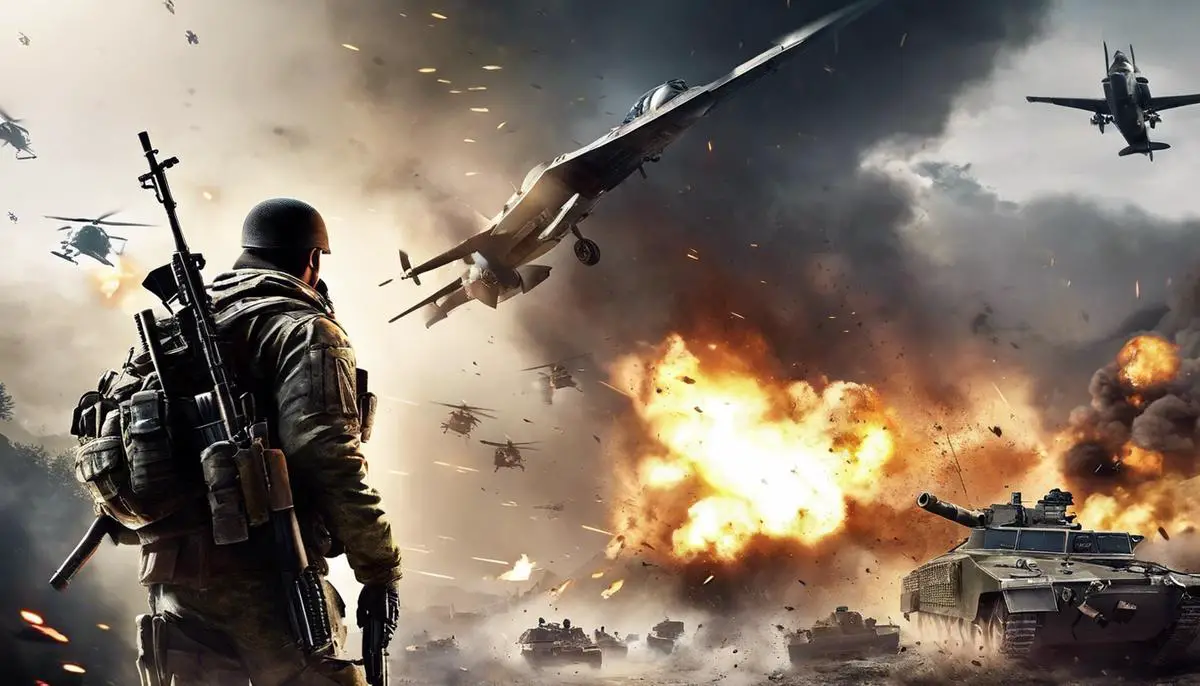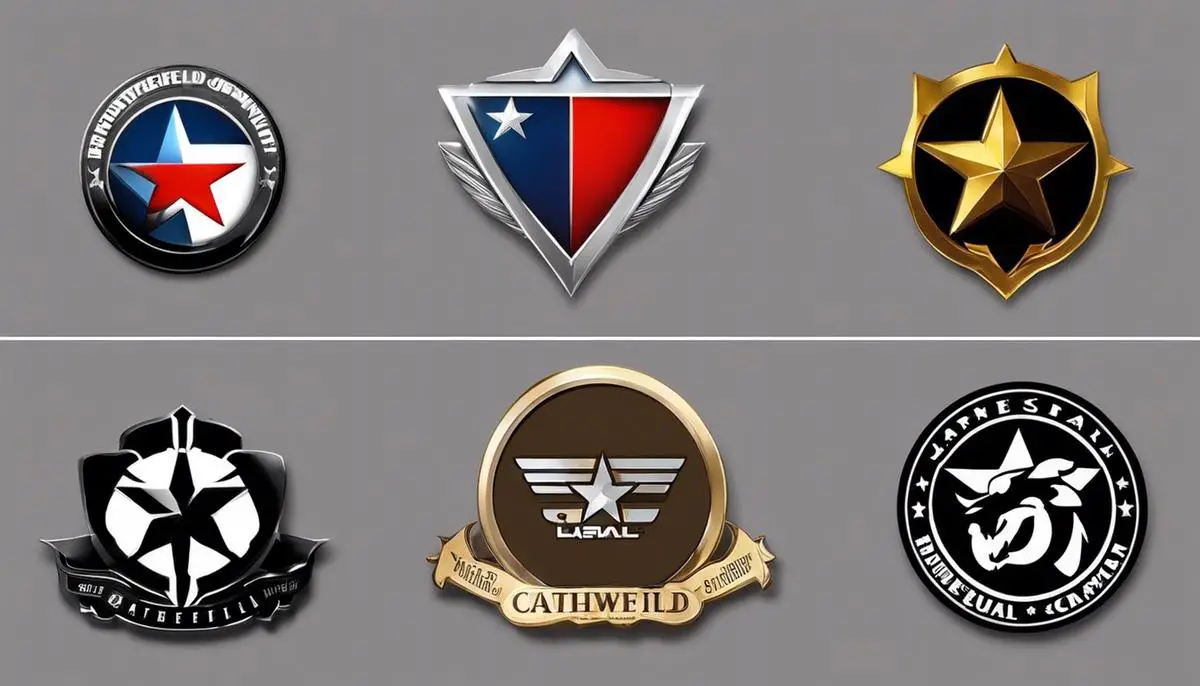The gaming industry has seen the fierce rivalry of two powerhouse franchises, namely Call of Duty and Battlefield, for over a decade. With each game release, both franchises strive to deliver top-notch gaming experiences, competing not only in their shared genre but also across numerous elements that extend beyond the basic gameplay. Within this examination, we will delve into the intricacies of both Franchises, from the gameplay mechanics that define the tactical and action-packed experiences of each game, to the captivating stories and narratives that sustain the players’ engagement. We will also evaluate the graphics, audio and technological advancements that have continually enhanced the game aesthetics and performance, and the community and multiplayer elements that foster player interaction and team dynamics.
Gameplay Mechanics and Design
The Battlefield vs Call of Duty: A Comparative Look into Gameplay Mechanics and Design
If gaming is your cup of tea, two of the heavyweights that have potentially caught your attention are the Battlefield and Call of Duty franchises. These renowned giants storming the world of first-person shooter games have unique gameplay mechanics and design concepts, blending competitive and tactical combat arenas that gamers worldwide have come to love.
Let’s delve deep into their core gameplay mechanics and designs, and see how these much-loved franchises differ.
-
Game Environment
The first point of divergence comes from the environment the gameplay fosters. Battlefield creates a large-scale environment with maps that can house numerous players in a single game. These expansive open-world maps are suitable for lengthy games with a vast player-base. On the other side, Call of Duty casts a more intimate environment with tighter, smaller maps where fast-paced, close-quarters combat reigns supreme.
-
Player Engagement
Battlefield is all about grandiosity and team play. It fosters a sense of camaraderie, with players focused on completing a series of objectives together. Players take on different roles, such as medics or engineers, contributing to the team’s success. Meanwhile, Call of Duty shines in its ability to attract lone-wolf players. It focuses on individual prowess, with players often competing for the highest kill-counts. The spotlight is on personal achievements rather than team-play.
-
Customization
While both games offer customization features like weapon and character skins, they approach it quite differently. In Battlefield, the emphasis is more on the functional loadout system where players can tweak their gear to suit the role they’re playing in the team. Call of Duty leans towards visual customization, providing unique options for character appearances, weapon skins, and emotes.
-
Game Modes
In both franchises, classic genres of game modes are common; however, They’re executed distinctively. Battlefield offers epic, story-driven campaign modes and engaging multiplayer modes with huge player numbers. Simultaneously, Call of Duty presents twitch-reflex testing game modes, offering fast-paced action. It boasts intense game modes that revolve around quick-fire combat in close-quarter maps.
-
Gameplay Mechanics
When it comes to gameplay mechanics, the differences are mirrored again. Battlefield is known for its intricate damage system and lifelike physics gameplay. Vehicles can be realistically damaged, with impacts affecting their performance. Call of Duty capitalizes on a simpler and more accessible damage model. It provides the fast and furious combat mechanics that gamers can quickly grasp and indulge in.
The fascinating world of Battlefield and Call of Duty, though both revered in the world of first-person shooters, are starkly different canvases painted with unique design philosophies and gameplay mechanics. Each offers a unique, immersive gaming experience that caters to different styles and preferences. Whether you’re a fan of team-focused, grand scale warfare, or fast-paced, solo competition, these long-standing franchises have got you covered.

Story and Narrative
Narrative Aspects & Storytelling Devices in Call of Duty and Battlefield Compared
Let’s plunge into another fascinating segment we’re all chomping at the bit to uncover – the immersive world of narratives and storytelling in Call of Duty and Battlefield games. Our deep curiosity springs from these franchises’ triumphs in captivating millions of players globally.
When talking about the narrative aspects, Call of Duty oftentimes hits the bullseye with its in-depth exploration of world wars (like WWII, Vietnam, and the Cold War). The franchise regularly showcases individual tales of soldiers, plunging us into a heady mix of tales that tug at our heartstrings. It’s like you’re on-board a soldier’s journey, facing their trials, and sharing in their victories. The character development is more narrative-driven, which ensures a deep connection with each character.
Now turn your gaze to Battlefield—quite the polar opposite. Instead of focusing on individual histories, it hurls you into a grander scheme, one choreographed on an impressive scale of war settings. The Battlefield franchise favors the colossal narration of epic warfare, with a panorama of events rolled into one overarching tale. Multiple protagonist perspectives—both on good and evil sides—reveal the larger machinations of war. It takes a collective approach, knitting together different stories in one coherent eye-opening narrative.
Shifting the lens to storytelling devices, Call of Duty infuses cinematic elements, thrusting you into a movie-like experience. From scintillating cut scenes, high octane chase sequences, to heart-racing stealth missions, it’s a fine blend of on-the-edge action and immersive storytelling. The narrative is often linear, driving you from one climactic point to another, enshrouded in a whirlpool of suspense and surprise.
On the other end of the spectrum, Battlefield games steer away from movie-like linear storytelling. They grant players the novelty of decision making, with multiple endings. As the narrative pieces together through your actions, Battlefield underlines the fact that you are not just a participant, but an influencer. Each story is flavored with your choices, creating a greater element of user control and dynamic storytelling.
Having stacked Call of Duty and Battlefield side by side, we see these juggernauts offer contrasting experiences — one with intimate individual-centric narratives, the other with monumental tales of warfare. Call of Duty weaves stories in a cinema-styled setting, while Battlefield delivers a theater of war, colored by your decisions on the battlefield.
These narrative and storytelling contrasts depict the expressive power of video games as more than a medium for entertainment. They are sprawling canvases of momentous tales and human emotion, showcasing the true artistry embedded in the gaming realm. Though Call of Duty and Battlefield offer unique approaches to storytelling, they share a common ground of unmatched devotion to delivering compelling narratives that leave us gamers yearning for the next chapter.

Graphics, Audio, and Technological Advancements
Digging deep into the graphical fidelity, auditory experience, and technological advancements, the Battlefield and Call of Duty franchises have both demonstrated significant strides. But which one reigns supreme in terms of consistency?
When you take a look at graphical fidelity, the difference becomes quite clear. Battlefield, from its inception, has strived for ultra-realistic visuals. The franchise’s use of the Frostbite engine starting from Battlefield 3 changed the entire game landscape, setting a new bar in terms of visual reality. This technology allows for photorealistic graphics, amazing light rendering, and incredibly detailed environments, making every gameplay scene look like a still from a high-definition war movie. And the franchise has worked tirelessly to maintain – and elevate – this standard in each instalment.
Call of Duty, in contrast, has been a bit less steadfast in its graphical presentation. Though there have been significant graphical upgrades over the years, such enhancements have been a bit sporadic and inconsistent. While some of the game instalments look stunning, others have left fans desiring more.
In the sound department, both franchises bring it – using high-quality sound effects to add to the realism of the game. Battlefield, however, incorporates sound in a uniquely immersive way. Battlefield’s audio dynamically reacts to the events happening around the player, whether it’s a nearby explosion or the whistle of an incoming bullet. This aspect enhances the player’s auditory experience, creating a more immersive and realistic ambiance. Call of Duty, though delivering highly realistic gun and action sounds, doesn’t quite match Battlefield’s level of auditory immersion.
Technologically, both franchises have seen significant advancements. Yet, Battlefield again nudges past Call of Duty here, bringing innovations such as the Levolution mechanic, which allows gamers to dynamically alter the environment. This feature changes the landscape of the game, creating new challenges and opportunities for strategy. Call of Duty has kept a quicker pace in releasing new instalments, but this has sometimes led to less noticeable technological advancement from one game to the next.
In conclusion, while both Battlefield and Call of Duty franchises have greatly contributed to the evolution of first-person shooter games, Battlefield has been more consistent in terms of graphical fidelity, auditory experience, and technological advancements. Each new title in the Battlefield franchise not only matches the standards set by the previous instalment but exceeds them, ensuring an ever-evolving gaming experience that is as immersive as it is visually stunning.

Community and Multiplayer Elements
Multiplayer Experience and Community Engagement: Battlefield vs Call of Duty
It’s now time to dive into a deeper understanding of the multiplayer experience and community engagement differences between Battlefield and Call of Duty. In the realm of multiplayer online gaming, both franchises exhibit unique elements and strategies that have garnered dedicated fan bases and communities.
In terms of multiplayer experiences, Battlefield delivers immersive, large-scale warfare that easily promotes camaraderie among players. This option allows you to feel the grandeur of large-scale warfare while also cooperating in teamwork-based objectives, thus building a sense of companionship among your squad.
On the other hand, Call of Duty provides a competitive environment with fast-paced combat that emphasizes individual skill and quick decision-making. This encourages a fierce and passionate community that thrives on competition and constant growth of individual skills. The energy in the multiplayer arena here is intense and competitive, sparking players to strategize and constantly improve their gameplay.
Moreover, the Community engagement is also quite different across both franchises. Battlefield has historically focused on a more mature audience, consisting largely of veteran gamers who appreciate the tactical depth offered. This community facilitates more strategic and considered gameplay, supported by forums, YouTube channels, and social media communities where players discuss tips, strategies, and share their epic moments.
Contrarily, Call of Duty attracts a more diverse user base, including both casual and hardcore gamers. This has cultivated an extremely active and conversational online community with various platforms available for players to share tricks, tips, game highlights, and even memes. The Call of Duty community is often characterized by its fast-paced exchanges mirroring the swift gameplay, filled with passionate debates about game strategies and updates.
Another differentiator is the unique eSport scenes in both franchises. Call of Duty has a more established and popular eSport scene with several high-profile competitions held annually, bringing together the top global teams to compete. This adds to the vibrant community as fans rally around their favorite teams, players, and analyze gameplay at professional levels.
The Battlefield series, while having fewer eSport events, have cultivated an avid community engaged in modding that provides unique user-generated content. This shared creativity fosters deep connections among the community members.
In conclusion, although both franchises deliver gripping multiplayer experiences, the sense of community and the player interactions within these environments distinctly vary. Battlefield leans more towards cooperative, large-scale warfare, attracting mature gamers, while Call of Duty thrives on competitive, fast-paced action, attracting a broad spectrum of players. And it’s these defining differences that continue to shape and foster their respective thriving communities of devoted gamers.

Looking closely at both franchises, one sees a fascinating matrix of similarities and disparities that intertwine in creating unique gaming experiences. The gameplay mechanics and design in both Battlefield and Call of Duty offer distinctive styles, from Battlefield’s realistic, strategic battles to Call of Duty’s high-octane, combat-intensive encounters. Their narratives bring forward compelling storylines that engage players in different manners, just as their technological advancements push the boundaries of gaming visuals and acoustics. Meanwhile, their multiplayer elements demonstrate an understanding of team-based gaming and community formation. Thus, while both franchises may compete within the same space, they each carve out their niches, crafting identities that make them both appealing to gamers worldwide but in subtly different ways.
- Guide to Life Is Strange: True Colors Ch. 1 Choices - April 4, 2024
- Catching Spiritomb in Pokemon BDSP - April 4, 2024
- Mastering Life Is Strange: Key Choices in Chapter 1 - April 4, 2024
Views: 2








